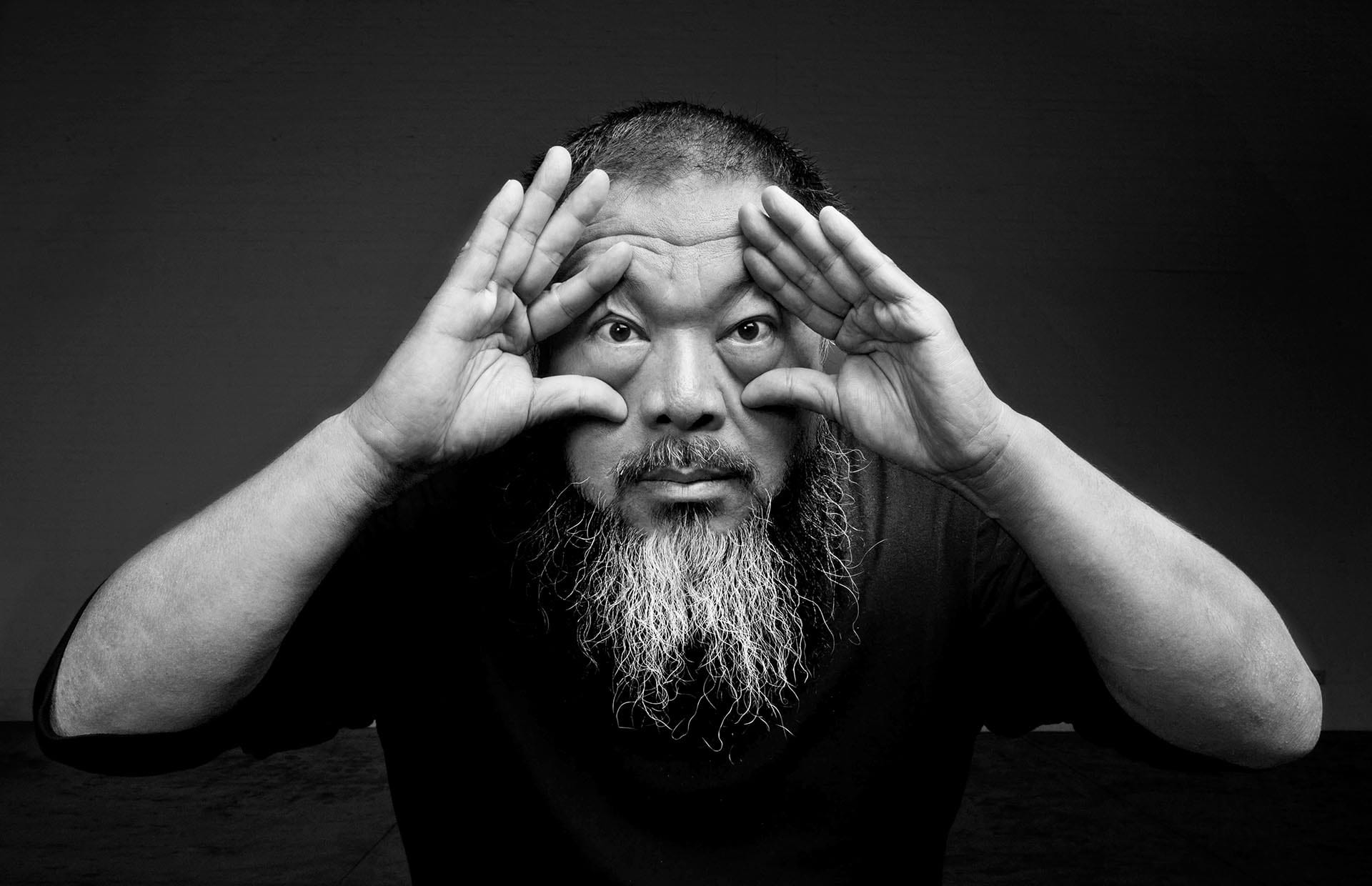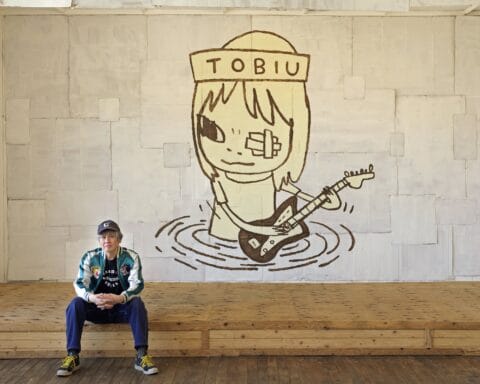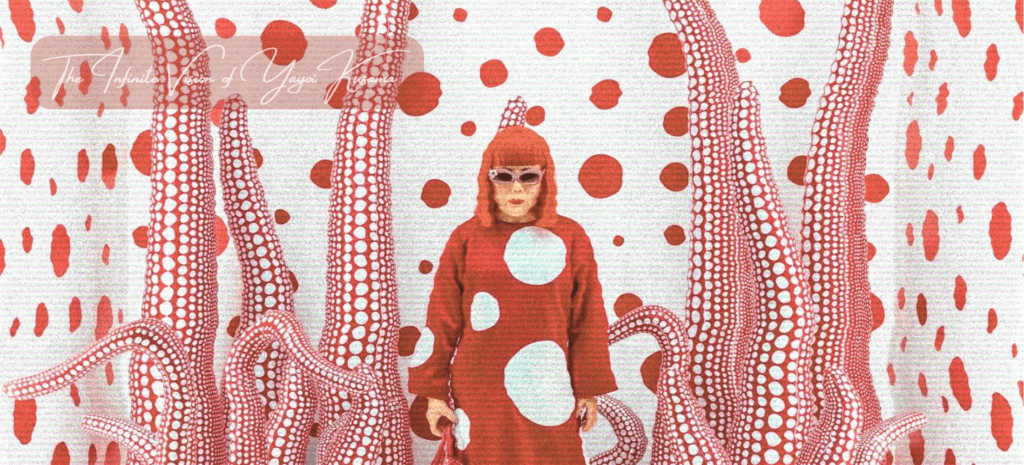Ai Weiwei is a prominent contemporary artist and activist whose work extends beyond traditional art forms to encompass social and political commentary. Born in Beijing in 1957, Ai’s upbringing was marred by political persecution; his father, Ai Qing, a renowned poet, was branded a rightist and exiled to a labor camp during the Cultural Revolution. This experience indelibly stamped Ai’s worldview, instilling a tenacious spirit of dissent and advocacy for human rights.
Ai Weiwei’s career trajectory diverged significantly from the conventional pathways pursued by many artists. In 1978, he was one of the founding members of The Stars, an avant-garde collective that challenged the restrictions imposed by the Chinese government on culture and expression. This early defiance set the stage for a lifetime of audacious and thought-provoking art.

In the 1980s, Ai moved to the United States, absorbing Western art and ideologies that further informed his multifaceted approach to art. His return to China in the 1990s marked a seminal period in which Ai began using his art as a potent vehicle for political criticism. His works often blend traditional Chinese craftsmanship with contemporary themes, serving as a bridge between historical and modern critiques.
Notable achievements in Ai Weiwei’s expansive career include his participation in the design of the ‘Bird’s Nest’ stadium for the 2008 Beijing Olympics and his seminal installations such as ‘Sunflower Seeds’ at the Tate Modern. The latter project, comprising millions of handcrafted porcelain seeds, critiqued the intersection of mass production and individual experience.
Ai’s personal narrative is indelibly linked to his artistic voice. His activism came to a head with his 2011 arrest and subsequent detainment by Chinese authorities, an incident that garnered international outrage and advocacy for his release. This experience heightened the global visibility of his work and solidified his status as a symbol of resistance against authoritarianism.
Through his unique melding of art, activism, and personal history, Ai Weiwei has crafted a legacy that transcends aesthetic appreciation, prompting audiences worldwide to engage with critical social and political issues.
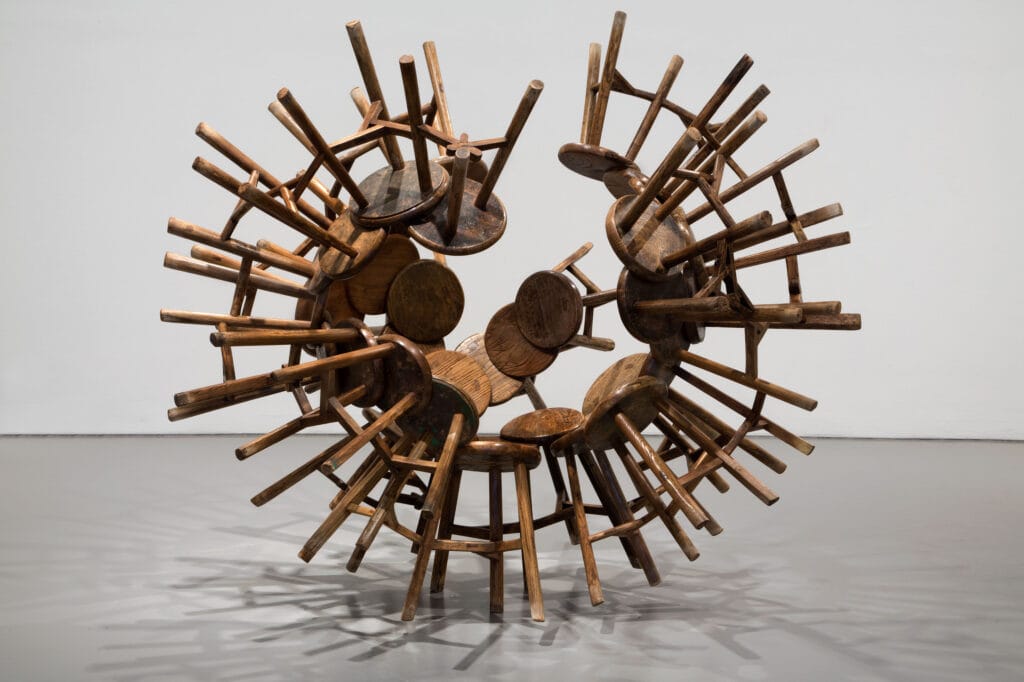
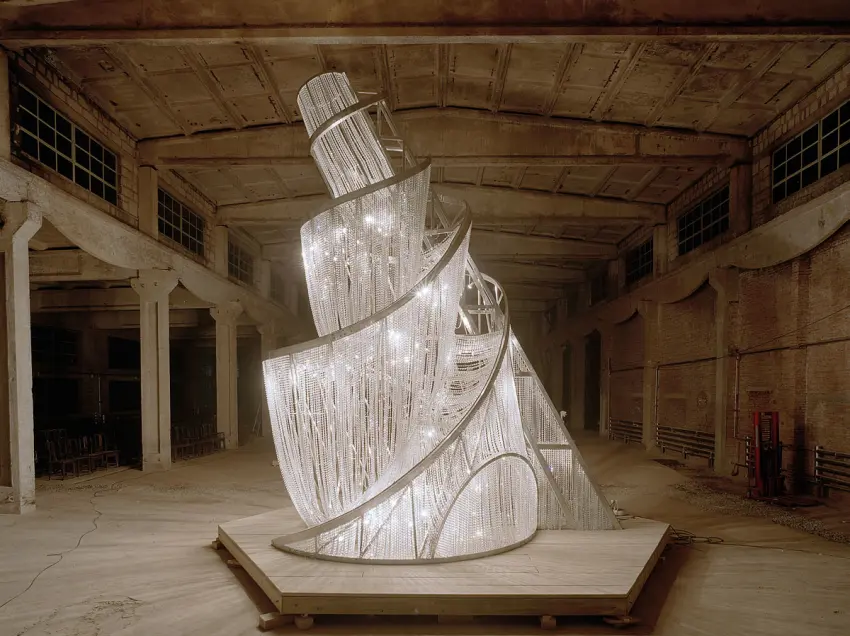


Major Works and Installations
Ai Weiwei has consistently used his art as a vehicle to challenge social norms and provoke thought about deep-seated issues. One of his most iconic pieces, ‘Sunflower Seeds’, displayed at the Tate Modern in London, comprises over 100 million hand-painted porcelain seeds. Manufactured by Chinese artisans, this installation speaks volumes about mass production, the individual versus the collective, and the complex relationship between China’s historical craft traditions and contemporary life. The tactile and visual uniformity of the seeds may seem mundane at first glance, but it elicits profound contemplation about labor, consumption, and the interplay of individual and collective identity.
Another notable work, ‘Dropping a Han Dynasty Urn’, vividly captures Ai Weiwei’s boldness and willingness to court controversy. The triptych of photographs shows Ai Weiwei deliberately dropping and shattering a valuable Han Dynasty urn. This provocative act is laden with symbolism, challenging the reverence for antiquity and questioning the societal and cultural significance ascribed to historical artifacts. In doing so, Ai Weiwei invites viewers to ponder the tension between the preservation of heritage and the need for cultural dissidence in modern times.
‘Straight’ is an installation that reacts to a significant natural disaster in China: the 2008 Sichuan earthquake. For this piece, Ai Weiwei collected and straightened 90 tons of steel rebar, remnants from the collapsed school buildings that led to the deaths of thousands of students. This work serves as a poignant memorial to the lives lost while critiquing governmental neglect and systemic corruption. It visually embodies both resilience and grief, transforming materials associated with tragedy into a powerful testament to accountability and remembrance.
Through these works, Ai Weiwei steadily communicates his artistic vision: a relentless interrogation of authority, an unwavering commitment to human rights, and a nuanced reflection on the intersections between individuality and collectivism. Each piece not only displays his consummate skill in various mediums but also immortalizes his role as a social commentator, urging audiences to confront uncomfortable truths and reflect on the transformative power of art.
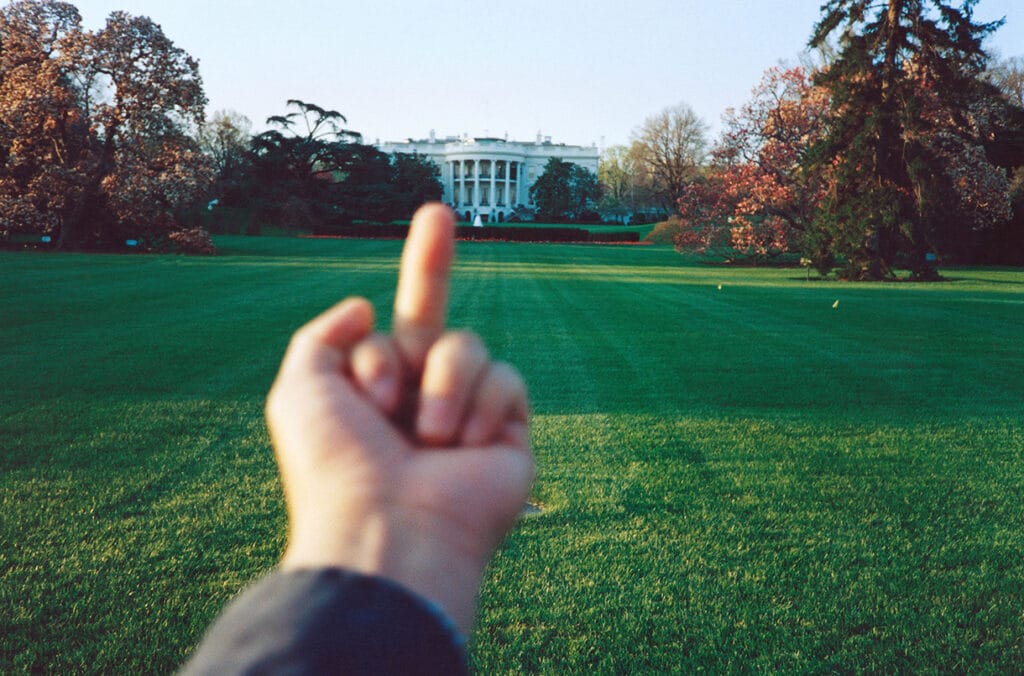

Political and Social Activism
Ai Weiwei, renowned for his audacious and profound artistry, has consistently used his platform to voice strong critiques against political and social injustices. His art transcends mere aesthetics, acting as a powerful medium for political and social commentary. As an activist, Ai Weiwei meticulously scrutinizes Chinese government policies, human rights abuses, and global social issues, often paying a heavy personal price for his outspoken stance.
One pivotal example of Ai Weiwei’s political and social activism is his response to the 2008 Sichuan Earthquake. The earthquake, which resulted in the catastrophic collapse of numerous poorly-constructed schools, tragically claimed thousands of children’s lives. Weiwei’s work, “Remembering,” composed of 9,000 school backpacks, was a poignant tribute to the lost children and a direct condemnation of the Chinese government’s corruption and negligence. His activism surrounding this event underscored the profound impact that structural failures and corrupted systems can have on society’s most vulnerable members.
Beyond China’s borders, Ai Weiwei’s activism stretches to global social issues, prominently illustrated by his work on the refugee crisis. His installations, such as “Law of the Journey,” featuring a colossal inflatable boat teeming with faceless refugee figures, highlight the harrowing plight of displaced individuals worldwide. This installation not only raises awareness but also invites discourse on the global response to human suffering and the ethics of immigration policies. His poignant portrayal of refugees bridges the gap between art and activism, making a compelling call for empathy and action.
Ai Weiwei’s fearless critique of the Chinese government’s human rights violations and his global advocacy for social justice positions him as a pivotal figure in contemporary political activism. Through his art, Ai Weiwei challenges societal norms and incites dialogue, urging the world to confront and rectify the injustices that pervade our societies. His unwavering commitment to activism ensures that his art remains a transformative force, compelling change and fostering a greater understanding of our collective human experience.

Themes in Ai Weiwei’s Art
Ai Weiwei, a pivotal figure in contemporary art, continually uses his work to explore multifaceted themes that resonate with both local and global audiences. One central theme that permeates Ai Weiwei’s oeuvre is the quest for freedom of expression. This is powerfully demonstrated in his installation “Straight” (2008-2012), consisting of 150 tons of rebar from schools destroyed in the 2008 Sichuan earthquake. The piece serves as a poignant critique of governmental censorship and the suppression of information.
Another recurring theme in Ai Weiwei’s art is the value of human life. “Remembering” (2009) exemplifies this theme through its stark visual and emotional impact. The installation, composed of 9,000 children’s backpacks, commemorates the young lives lost in the Sichuan earthquake. The phrase “She lived happily for seven years in this world” written in Chinese characters on the backpacks epitomizes the personal tragedies behind the statistics, thus emphasizing the sanctity of individual life.
Cultural identity is also a significant theme in Ai Weiwei’s work. His use of ancient Chinese artifacts in modern contexts eloquently critiques the commodification and loss of cultural heritage. For instance, “Dropping a Han Dynasty Urn” (1995) portrays Ai Weiwei physically dropping and breaking a 2,000-year-old urn, thereby igniting debate about the preservation of cultural artifacts versus their symbolic destruction to challenge contemporary values.
The conflict between tradition and modernity finds frequent expression in Ai Weiwei’s projects. In his “Coca-Cola Vase” series, Weiwei paints the iconic brand logo on ancient vases, creating an unavoidable clash between commercialism and tradition. By juxtaposing these elements, he invites viewers to reflect on how modern consumption is eroding historical and cultural values.
Through these interwoven themes, Ai Weiwei continues to provoke critical thought about pressing sociopolitical issues. His ability to merge the personal with the political, the historical with the contemporary, underscores the enduring relevance and transformative potential of his art.
While Ai Weiwei is internationally celebrated for his bold political statements and artistic ingenuity, it is his techniques and choice of mediums that truly set him apart. Weiwei expertly marries traditional Chinese craftsmanship with contemporary art practices, creating a unique dialogue between history and modernity. He often employs age-old methods such as wood joinery, porcelain making, and bamboo working to reflect on cultural heritage while simultaneously critiquing current societal issues.
Beyond traditional craftsmanship, Ai Weiwei’s fascination with readymade objects brings a Duchampian sensibility to his work. By repurposing existing objects, he questions the nature of art and the value systems that surround it. One of his famous works, “Dropping a Han Dynasty Urn,” involves the deliberate smashing of an ancient relic, challenging the reverence for cultural artifacts and the material obsessions of the modern world. This provocative use of readymade objects forces viewers to reconsider the boundaries between art, history, and commodity.
Ai Weiwei’s large-scale installations further underscore his innovative approach. Works such as “Sunflower Seeds,” which consisted of 100 million handcrafted porcelain seeds, or “Straight,” made from rebar recovered from the Sichuan earthquake, are monumental in both scale and message. These installations don’t merely impress with their size; they evoke powerful emotions and incite critical thought on social justice, human rights, and the often-overlooked stories of ordinary individuals.
One of the most striking aspects of Ai Weiwei’s work is his inventive use of various materials to convey complex messages. Whether through LEGO bricks, bicycle frames, or life jackets, he transforms ordinary items into powerful symbols. His material choices are not arbitrary; each element is meticulously selected to resonate with the thematic undertones of his work, adding layers of meaning that engage audiences on multiple levels.
Ai Weiwei’s innovative techniques and diverse mediums establish him as a masterful artist whose work transcends the conventional. His seamless integration of traditional craftsmanship, modern readymades, and large-scale installations amplifies his artistic voice, allowing him to confront and explore intricate socio-political issues through a unique and compelling visual language.

Controversies and Censorship
Ai Weiwei’s career has been profoundly shaped by numerous controversies and acts of censorship. His unwavering stance on human rights and political transparency has frequently put him at odds with Chinese authorities. One of the most pivotal moments of his career occurred in 2011, when Ai was detained by Chinese officials for 81 days without charges. This event not only garnered widespread international attention but also symbolized the severe clampdown on dissenting voices within China.
In 2018, Ai’s studio in Beijing, a significant hub of his artistic production, was demolished by the government without prior warning. The event was a stark reminder of the recurring attempts by the state to suppress his work. The loss of the studio was not just a physical blow but also a symbolic gesture aimed at undermining his influence and presence in the art world. These acts of censorship have undeniably added layers of meaning and urgency to his work, making his art a direct response to the sociopolitical climate he navigates.
Ai Weiwei has also faced numerous legal battles, often related to his outspoken criticism of the government. One prominent example is the hefty fine for alleged tax evasion levied against him in 2011, perceived by many as a tactic to silence him. Despite these legal struggles, Ai has continued to use his art as a platform for advocacy, challenging oppressive structures and sparking dialogues on freedom and justice.
The controversies surrounding Ai Weiwei have greatly influenced public perception of his work. While some view him as a rebellious figure challenging the status quo, others see him as a martyr for artistic freedom and human rights. His encounters with censorship have not only heightened the political and social resonance of his art but have also solidified his position as a prominent, albeit contentious, figure in contemporary art. Through these tumultuous experiences, Ai Weiwei continues to redefine the role of the artist as both a creator and an activist.
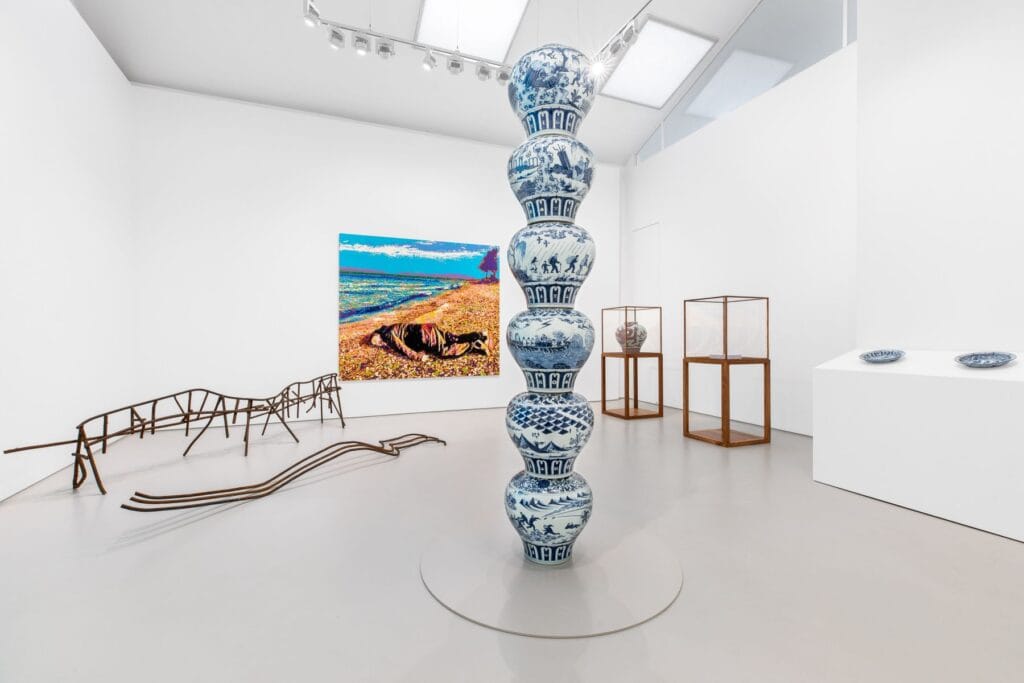
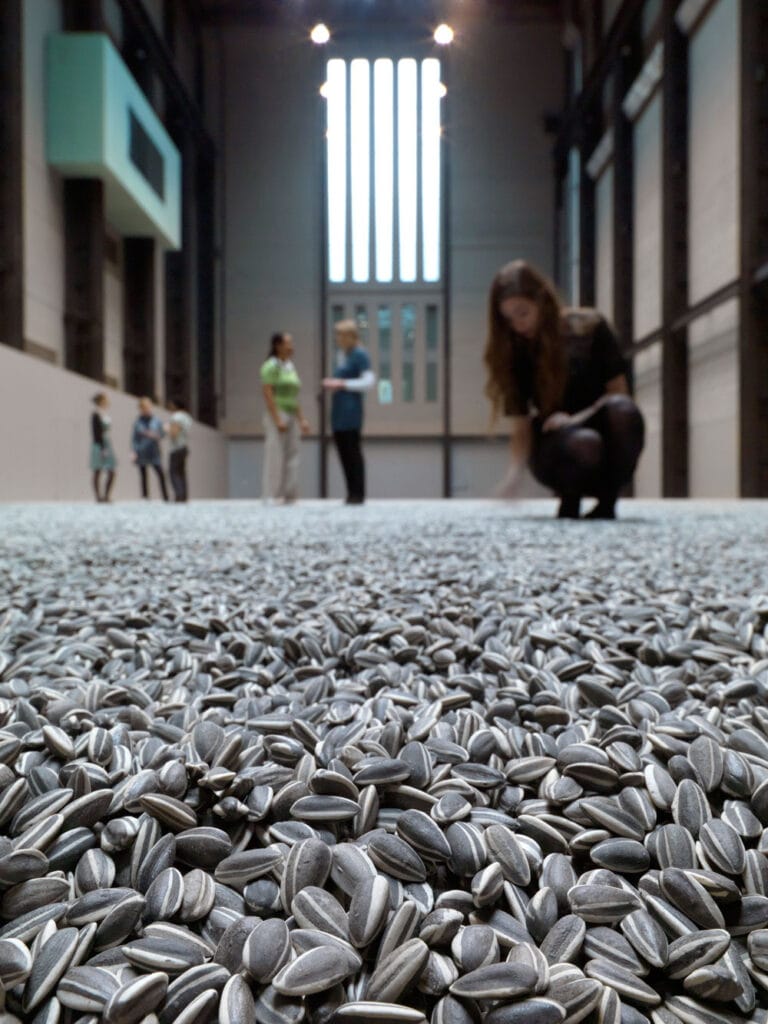
Global Influence and Recognition
Ai Weiwei’s global influence and recognition extend across continents, with his work resonating far beyond the confines of traditional artistic spheres. His provocative installations and multimedia explorations have been showcased in numerous prestigious institutions, including the Tate Modern in London, the Museum of Modern Art in New York, and the Martin-Gropius-Bau in Berlin. One of his most iconic exhibitions, “Sunflower Seeds” at the Tate Modern, exemplified his unique ability to blend monumental scale with deep sociopolitical commentary, profoundly affecting viewers worldwide.
Ai’s artistic contributions have not gone unnoticed in the realm of accolades. Among several awards, he has received the Václav Havel Prize for Creative Dissent, emphasizing his relentless commitment to freedom of expression and human rights. The Appraisers Association of America bestowed him with their Award for Excellence in the Arts, acknowledging his substantial impact on contemporary art. Such recognitions underscore Ai’s standing as a pivotal figure whose work continues to inspire and challenge norms on a global scale.
Collaborations have also played a crucial role in amplifying Ai Weiwei’s influence. His work with architects Herzog & de Meuron on the design of the Beijing National Stadium for the 2008 Olympics stands as a prominent example. This project not only highlighted his architectural ingenuity but also his engagement with high-profile, large scale collaborations that garner international attention.
Beyond exhibitions and awards, Ai Weiwei’s ethos resonates deeply within the art community. Contemporary artists and activists often cite his fearless approach to addressing oppression and his innovative artistic methodologies as a source of inspiration. His use of various mediums—ranging from sculpture to digital media—demonstrates an adaptability that influences emerging practices within the contemporary art world.
Through a combination of impactful exhibitions, prestigious awards, and influential collaborations, Ai Weiwei has cemented his stature as a globally revered artist and activist, whose work continues to inspire and provoke thought across diverse audiences.
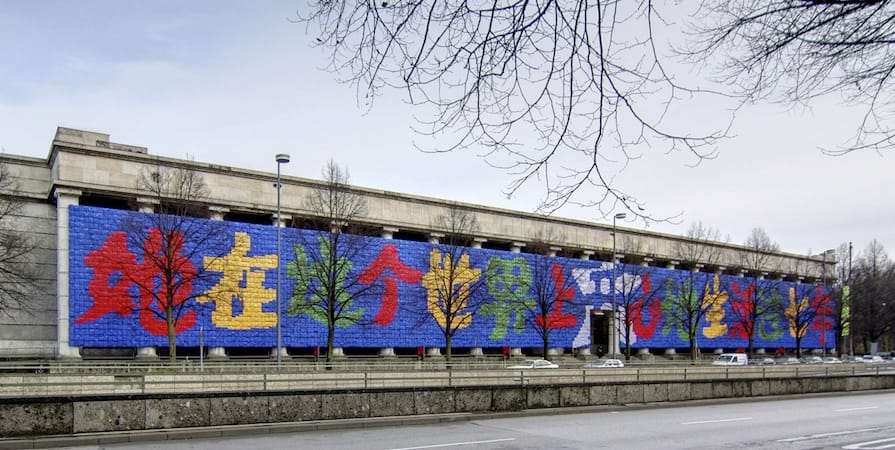
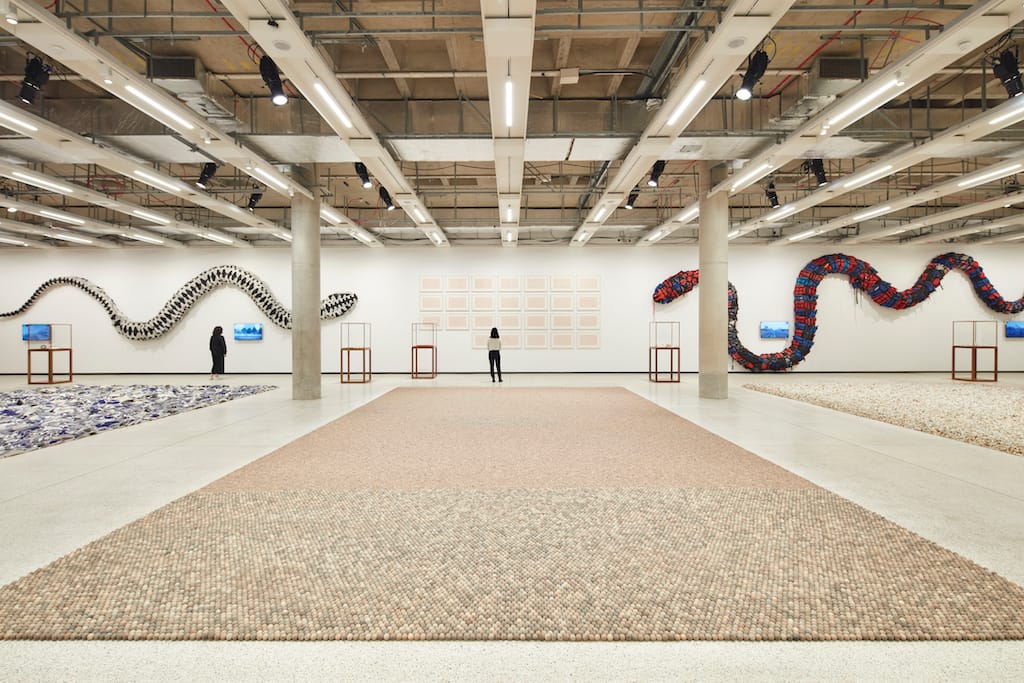
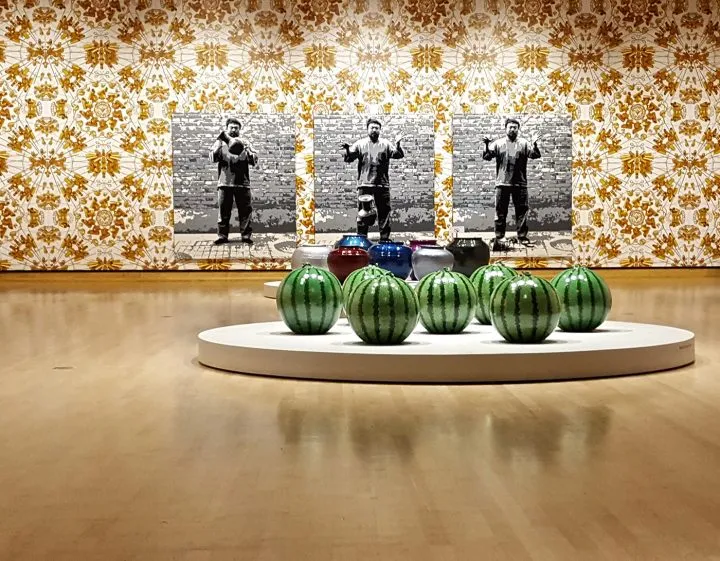
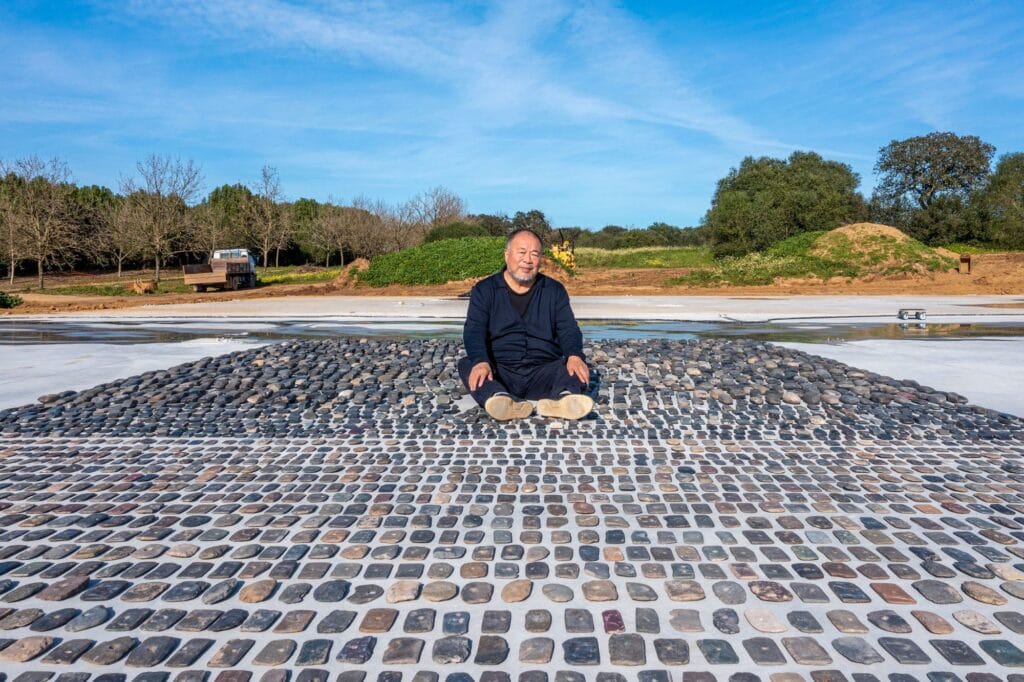
Ai Weiwei’s Future Directions
As one of the most influential and polemical contemporary artists of our time, Ai Weiwei’s legacy is already cemented in both art history and societal discourse. His unique blend of artistic innovation and fearless activism has broadened the scope of what art can achieve, pushing boundaries and challenging the status quo. He has firmly situated himself as a key figure not just in the art world but also in broader socio-political arenas, making an indelible mark that will be studied and referenced for generations to come.
A central aspect of Ai Weiwei’s enduring legacy is his ability to utilize art as a powerful medium for social change. His provocative installations, such as the iconic “Sunflower Seeds” and the poignant “Remembering,” draw attention to pressing global issues like human rights, freedom of expression, and the plight of the marginalized. Future generations of artists will undoubtedly look to Ai Weiwei’s oeuvre as a blueprint for how to harness art’s potential to instigate meaningful social discourse and challenge authoritarian regimes.
Moreover, Ai Weiwei’s influence extends beyond traditional art forms. His work in documentary filmmaking and digital media exemplifies how multidisciplinary approaches can amplify artistic messages. His documentaries, such as “Human Flow,” which addresses the global refugee crisis, will inspire upcoming filmmakers and digital activists to explore how their mediums can confront and critique societal injustices.
Looking forward, Ai Weiwei continues to be prolific in his creative endeavors. His ongoing projects frequently address contemporary social and political issues, ensuring that his work remains relevant and impactful. As technology and global communication evolve, it’s likely that Ai Weiwei will continue to explore new platforms and methods for his activism. His forward-thinking approach guarantees that he will remain a pivotal figure in both the art and activism communities.
In summary, Ai Weiwei’s lasting impact on society and art history is undeniable. His legacy serves as a beacon for future generations of artists and activists, guiding them in using their creativity to challenge societal norms and oppose authoritarianism. As Ai Weiwei continues to innovate, his work will undeniably inspire and provoke, ensuring that his influence endures well into the future.
